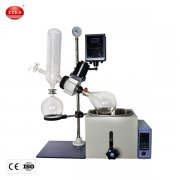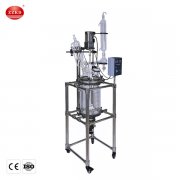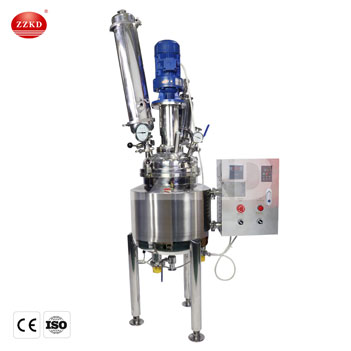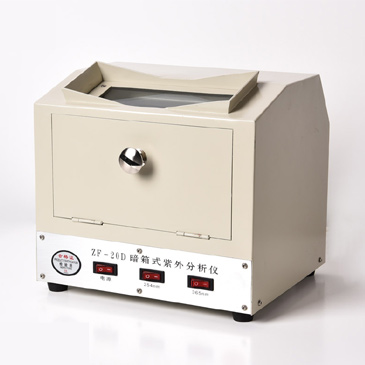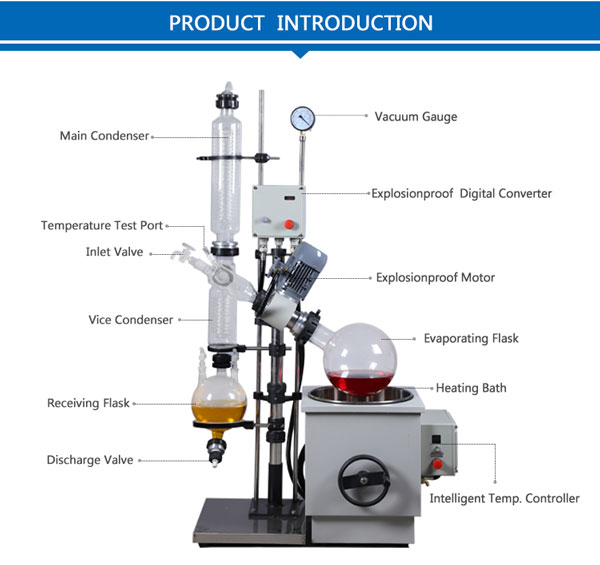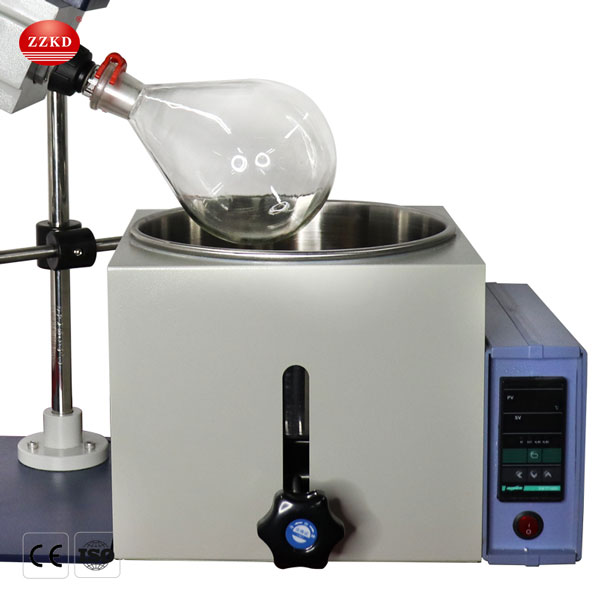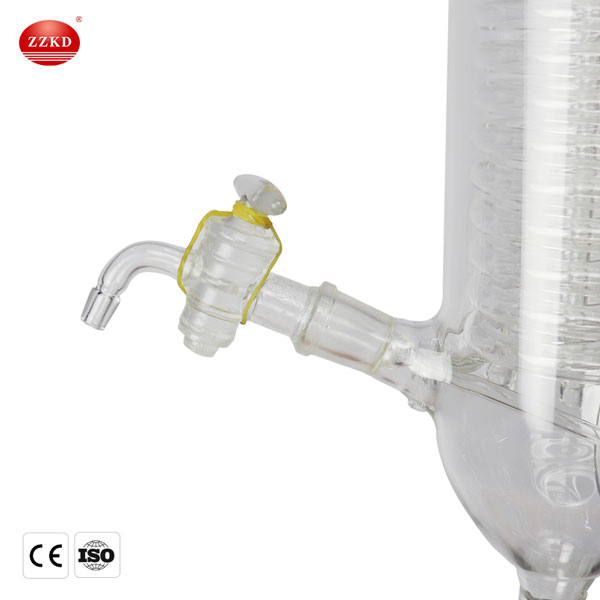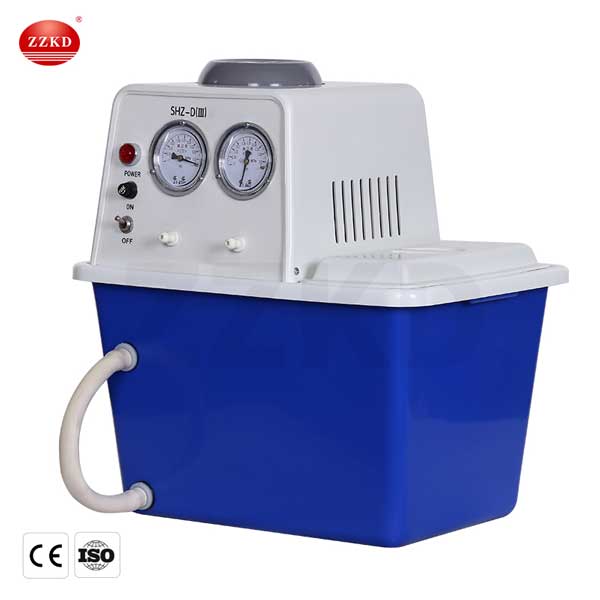Why is rotary evaporation more efficient than standard distillation?
1. The pressure in the system is reduced
The presence of vacuum reduces the pressure within the
RE-201D Rotary Evaporator. This lowers the vapor pressure required for boiling to occur, thereby lowering the boiling point of the solvent. In addition to lowering the boiling point, lower pressure can also speed up evaporation. As the solvent approaches its boiling point, it evaporates faster. The pressure down on the solvent makes it difficult for the molecules to escape as vapors. The lower pressure means these molecules can enter the atmosphere at a faster rate.
2. The temperature of the solvent increases
An increase in temperature will increase the vapor pressure, causing evaporation. However, heating the bath requires time and effort, whether using higher temperatures in a rotary evaporator or in a standard distillation setup. This reduces the efficiency of evaporating the solvent using elevated temperatures.
Also, at higher temperatures, more heat is lost to the surrounding environment and less heat is added to the bath as the temperature difference between the bath fluid and the internal heating element is reduced. This makes operation at higher temperatures slower and less energy efficient.
3. Flask rotation
Rotation of the flask plays an important role in a rotary evaporator for two main reasons: increasing the surface area of the solvent and stirring the water bath. In a static setup, as seen in standard distillation, the surface area of the solvent is limited. In a spinner flask, the solvent forms a thin film on the sides of the flask, greatly increasing the surface area and speeding up evaporation.
How to shorten the evaporation process of rotary evaporator?
1. Increase the size of the evaporating bottle
We all know that rotary evaporation flasks cannot be filled more than half of the liquid, which both prevents overflow and provides enough liquid level for efficient evaporation. Therefore, when we choose the capacity of the rotary evaporator, we must consider this issue.
In experimental research, it is more economical and practical to choose a
Mini Rotary Evaporator. But if you want to use a faster rotary evaporator, usually the bigger the better. Because larger flasks have a large surface, it allows more flasks to come into contact with the water/oil bath, which results in more uniform and rapid sample heating. Simply put, the larger the flask, the more the surface of the sample is exposed to the air inside the flask, making the evaporation process faster.
2. Increase the speed of the evaporating bottle
Increasing the rotation speed of the evaporating flask can improve the heat transfer to the evaporating flask and the solvent, expand the surface area of the liquid in the flask, and increase the evaporation rate. Most customers agree that faster is better, but be aware of turbulence, for liquids, too much speed will not only reduce evaporation efficiency, it will also cause evaporation and premature wear of the rotary evaporator, thereby reducing the service life of the equipment.
3. Increase the bath temperature of the rotary evaporator
CBD extract itself requires a lower water bath temperature to minimize thermal decomposition, so don't raise the bath temperature of the rotary evaporator too high and too fast. It should also be noted that if the set bath temperature is too high, the efficiency of the condenser must also be considered. Therefore, we need to use a slow heating method, it is recommended to use 30-40°C, with the condensation of the low-temperature coolant circulating pump. The temperature of the device can be between -10°C and 0°C.
4. Increase the degree of vacuum
One of the main reasons to use a rotary evaporator is to lower the boiling temperature of the solvent by using a vacuum to lower the pressure within the system. Therefore, it is helpful to increase the vacuum level and further reduce the pressure. If the vacuum is increased too quickly or too quickly, it can bump or blister. Reducing the pressure in the system can also cause the evaporation rate to be too fast. If the solvent does not have time to evaporate in the condenser, the uncondensed vapor may enter the vacuum pump.
How to choose the right vacuum pump for your rotary evaporator?
1. What solvent are you using?
This is important due to the different boiling points of the solvents. Low-boiling solvents such as acetone, dichloromethane, and pentane do not require as deep a final vacuum to evaporate as solvents such as acetonitrile, benzene, and chloroform. The removal of high boiling solvents such as water, DMSO, DMF and toluene requires a relatively deep end vacuum. You must ensure that the pump can achieve a high enough final vacuum to effectively remove the target solvent. For reference, see the boiling point table.
The topic then naturally developed into the need for chemical compatibility. Depending on the solvent vapour flowing through the
Rotary evaporator with chiller and vacuum pump, a good material can be identified for a long trouble-free life. Compared with rotary vanes and suction, dry oil-free pumps have obvious advantages in this field. In addition, they feature high-quality, corrosion-resistant wetted parts, are easy to maintain in the field, and do not generate hazardous waste.
2. What is the size of your evaporating flask?
This question allows you to choose a good sized pump for your application. Bigger is not always better. Pumps that are too large or flow too high for a given application are difficult to control, extremely inefficient, and more expensive to own and operate. On the other hand, an undersized or insufficient flow pump will slow down evaporation and result in longer treatment times. A pump for a 250 mL flask might not be a good pump to use with a 20 L evaporating flask and vice versa.
3. What is the temperature of your heating bath?
The purpose is to determine if the pump can provide the necessary vacuum and handle the steam temperature. The closer the bath temperature is to the boiling point of the solvent, the faster the evaporation rate. If the mixture is not sensitive to high temperatures, increasing the bath temperature will speed up the process and reduce the need for a deep vacuum pump. This may affect which pump is suitable for the job.
4. How do you want to control the degree of vacuum?
Vacuum control optimizes the vacuum level in the system. A very good vacuum reduces evaporation time and provides excellent product yields. Controlling the vacuum also reduces collisions and can improve solvent recovery and reproducibility.
Manual vacuum control consists of using a stopcock or manual valve to adjust the vacuum according to visual cues. With this method, you will need to monitor the entire process, as vacuum needs may change throughout the evaporation process.
Adaptive vacuum control provides great results in separation speed and solvent recovery, and leaves you with nothing to do after setup.
The above is the relevant content of the rotary evaporator brought to you by ZZKD. If you have any questions, you can contact us at any time, and we will serve you wholeheartedly.

 Products
Products





